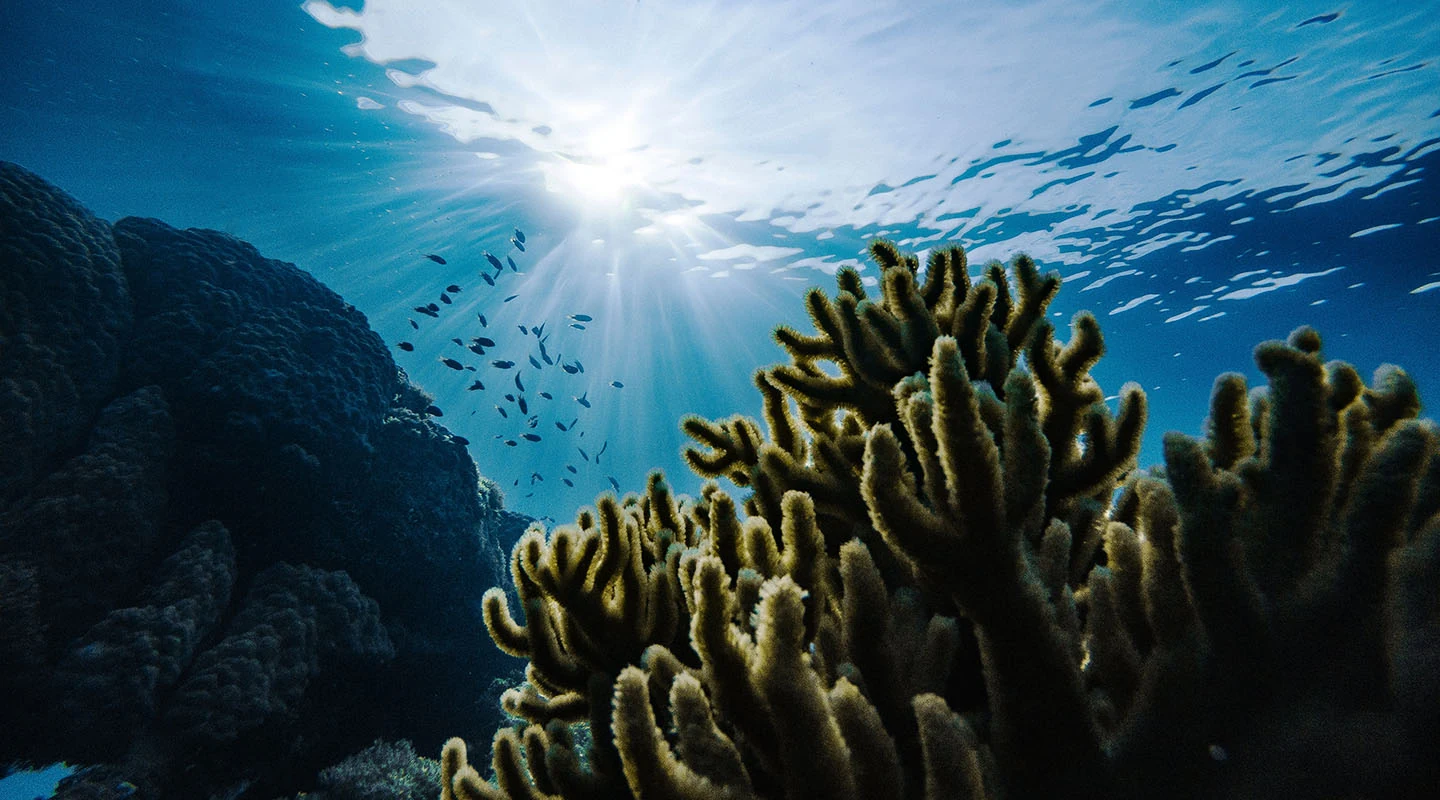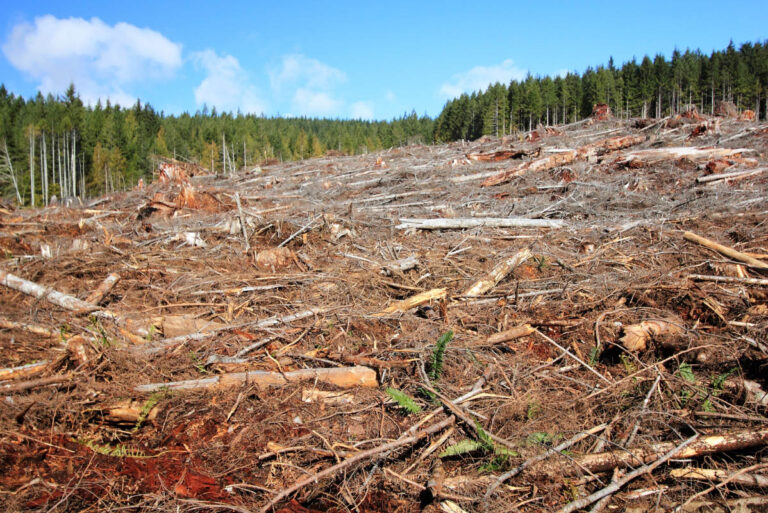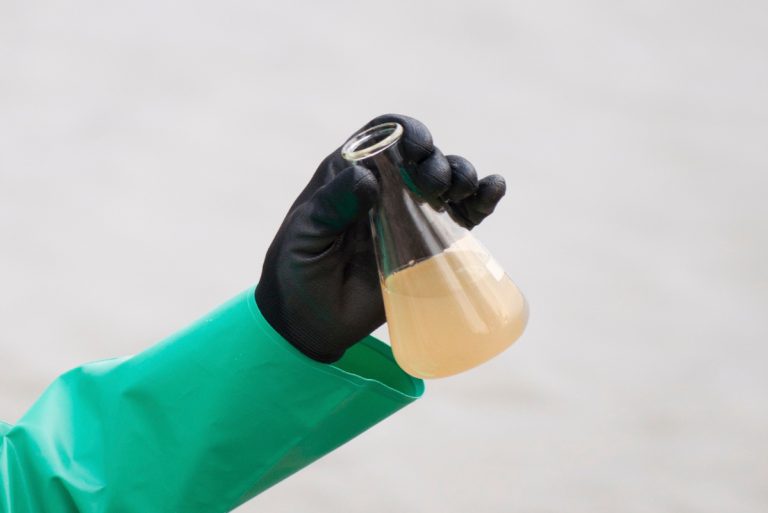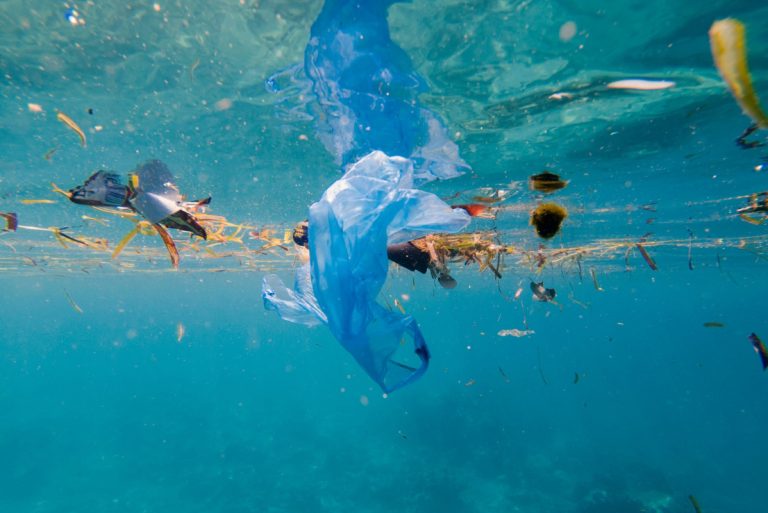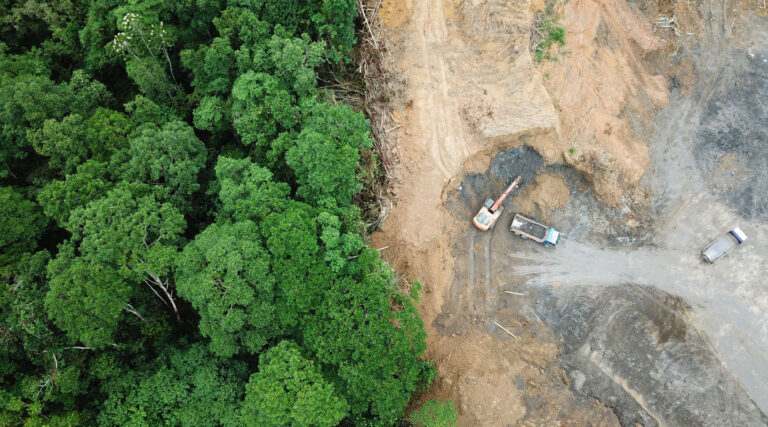Raised levels of carbon dioxide are not only having atmospheric effects. Carbon dioxide is also being absorbed by the world’s oceans, causing a startling drop in the pH of seawater.
Ocean acidification has the potential to do catastrophic damage to the marine environment and threaten human livelihoods, nutrition, and well-being. In this article, we will look at the carbon dioxide problem in our seas and explore the ocean acidification solutions that could prevent CO₂‘s devastating effects.
What is ocean acidification?
Ocean acidification is simply a sustained fall in the average pH of seawater in the world’s oceans. In the last seven decades, scientists have monitored a steep fall in the pH of oceans from 8.15 to 8.0. This may not seem much, but the pH scale is logarithmic, meaning that a small numerical drop represents a massive swing in acidity.
pH measures the concentration of the hydrogen ions (H+) that give seawater its acidity. The more hydrogen ions present in the seawater, the greater the acidity of oceans. A change in pH of just 0.1 means that hydrogen ion concentrations have climbed more than 26%.

Source: Wikimedia / Hendee
Marine scientists routinely monitoring pCO₂ and pH levels in oceanic waters worldwide have identified this disturbing trend. Open ocean voyages provide the opportunity to sample seawater using specialist equipment submerged for real-time readings.
Precision measurements can then be compared with scientists globally who have made similar measurements. Since ocean acidification has been identified and recognized, mitigating its effects is a key part of the UN’s Sustainable Development Goal 14: Life Below Water.
What causes ocean acidification?
The primary source of these excess H+ ions is atmospheric carbon dioxide. Though carbon dioxide is gas, it is also soluble in water. Normally CO₂ is cycled between the atmosphere and oceans with high uptake in biologically active parts of the ocean, and release in warmer and less active marine environments. Learn more about carbon cycle steps.
As CO₂ emissions have risen, the world’s oceans have absorbed the excess. When the ocean absorbs CO₂, it becomes carbonic acid (H2CO3). Carbonic acid further dissociates to become a bicarbonate ion (HCO−3) and a hydrogen ion (H+).

Though the oceanic pH is falling, it remains alkaline for now. Still, the effects of acidification are felt by organisms like mollusks and corals that need an abundance of calcium carbonate to build their shells and skeletons.
Increased H+ reduces vital carbonate ion levels, especially in colder and higher latitude waters that can absorb greater concentrations of CO₂.
Ocean acidification is based on an average pH reading, but this phenomenon can be localized in certain areas of increased gaseous exchange between the atmosphere and the ocean.
Factors that cause a localized increase in ocean acidification include:
- Strong and turbulent currents
- Proximity to large rivers (like the Amazon)
- The presence of sea ice
- High winds
- Precipitation
- Powerfully breaking waves
- Reduced growth and distribution of phytoplankton
What are the effects of ocean acidification?
Ocean acidification has wide-ranging effects. Some are poorly understood, but the consensus amongst scientists is that a reduction in oceanic pH will harm marine life. Here is a closer look at the effects:
Harm to marine organisms
The primary concern is the increased seawater pH’s effect on marine biology. The diverse ecosystems within oceans are sensitive to water chemistry, and even a slight derangement of parameters like pH could devastate populations of the most sensitive organisms. Biologists are concerned about the following multifaceted effects on marine organisms:
- Reduced calcification of corals, exoskeletons, and shells due to decreased carbonate levels in seawater.
- Increased predation of mollusks, corals, and other organisms with exoskeletons because their shells are weaker.
- Uptake of carbonic acid by fish leads to metabolic acidosis, a condition where the acid builds up in the blood and affects the metabolism. The acid acts as a stressor and compromises the growth and reproductive functions of the fish.
- Depression of marine organisms’ biological systems and functions leads to depressed metabolism, reduced reproduction, and increased susceptibility to disease.
- Disruption of the process by which larval corals and other organisms migrate to an optimal marine environment to grow.
- Larval urchins have been found to struggle to digest their food in acidic conditions.
- Phytoplankton and other marine microorganisms may struggle to reproduce if ocean pH becomes too deranged.
- The growth of seaweed and marine vegetation may also change, altering the composition of many coastal ecosystems.
Destruction of marine ecosystems
The smallest marine organisms are foundational to the food chains and biological systems that make up marine ecosystems. If left unchecked, ocean acidification could lead to the extinction of the most sensitive marine species. This would produce a catastrophic collapse in the availability of organisms critical to the marine food chain.
Collapse of fisheries
The fisheries that are sustained by normal ocean biochemistry are also under threat. Though larger organisms may be able to tolerate the acidification for longer, the loss of smaller marine organisms creates food stress that can lead to the dwindling of fish stocks.
The impact will be felt by the fishermen and other people who rely on fisheries for their livelihoods, currently estimated at more than a billion people. The devastations of oceans will also be felt in regions that attract tourists to visit their unique marine ecosystems.
Ocean acidification solutions: what can be done to mitigate this issue?
The issue of ocean acidification can be remedied by methods that tackle the levels of atmospheric free carbon dioxide in our environment. Climatologists say that the atmospheric carbon dioxide level has never been more than 300 parts per million. In the last 70 years, free CO₂ has climbed by just under 50% to approximately 420 parts per million.
The legacy levels of carbon that we find in our environment after 250 years of industrialization need to be tacked with the removal and sequestration of excess atmospheric CO₂. This has been the primary driver of ocean acidification; therefore, any steps that can be taken to reduce CO₂ emissions should positively affect this ongoing marine problem.
Scientists, environmentalists, technologists, and engineers are exploring various methods for recovering this excess CO₂. Strategies range from planting trees to advanced air-capture plants that can strip carbon dioxide from the environment. Though many solutions are currently proposals, their successful implementation could kickstart an economic revolution that can clean up our skies and seas.
Right now, CO₂ reduction methods are broadly grouped into direct methods using oceans as a potential carbon sink for the sequestration of CO₂, or indirect methods that reduce the rate of harmful greenhouse gas emissions. Let’s take a look at strategies that are currently being proposed.
Direct methods of reducing ocean acidification
Direct methods that are being explored for the reduction of acidification of the oceans leverage the oceans’ ability to sequester vast amounts of carbon dioxide. Oceans are the planet’s largest carbon sink. These massive bodies of water and the marine life within them can draw CO₂ out of the atmosphere and use it to support marine life or store it in the oceanic depths.
The complex biological and biogeochemical processes by which oceans remove CO₂ to the deep ocean are only just being understood. If they can be safely exploited, they can transform the upward trajectory of CO₂ concentrations and mitigate the acidification that is currently damaging our seas.
Direct solutions for ocean acidification comprise novel, ocean-based Negative Emissions Technologies (NET) that can actively remove CO₂ from the atmosphere. This is a completely new and underdeveloped area of environmental science, so the suggested solutions may or may not help to stabilize atmospheric CO₂ levels.
The most promising area of ocean-based NET is the nascent field of Ocean-based carbon dioxide removal (CDR). It has a suite of technologies and solutions that utilize existing oceanic biological and geological processes to absorb and store CO₂ within marine life, ocean geology, or the Challenger Deep at depths of more than 35,876 feet (10,935 meters).
Here are the five key Ocean-based carbon dioxide removal methods to watch:
1. Cultivating seaweed for carbon sequestration
Seaweeds are marine macroalgae that thrive on CO₂, removing it from the water and converting it into the sugars that drive their growth! Cultivation of seaweed could sequester vast amounts of carbon dioxide and, depending on the seaweed species used, provide a delicious and extremely nutritious food source that does not require fertilizers for its growth.

A notable advantage of this ocean acidification solution is the rapid growth rate of many seaweed species, which can see some kelp varieties grow more than 2 feet (60 centimeters) in a single day, meaning that carbon removal could be accelerated by using the right species.
Scientists also propose that the seaweed could be converted into biochar, bioplastics or simply sunk in the ocean depths. Engineers are seeking to automate the seaweed cultivation process using floating oceanic platforms with robotics for harvesting, the creation of bales, and sinking the seaweed into the deep ocean for long-term sequestration.
2. Use of phytoplankton cultivation for carbon sequestration
Phytoplankton are the microalgae at the bottom of the marine food chain. These microscopic organisms may be tiny, but they use CO₂ to drive rapid growth, taking it out of the atmosphere and water. Scientists believe that even a small rise in the overall mass of phytoplankton could impact CO₂ levels and provide marine life with an abundant food source.

Proposals have been made to harness phytoplankton for CO₂ fixation by promoting the ideal environment for microalgae growth in specific ocean areas.
Specific areas of the ocean could be targeted for phytoplankton blooms by using wave-powered pumps to bring nutrients from deeper seawater to the photic zone where these microalgae can thrive.
3. Enhancement of ocean alkalinity
This method primarily seeks to mitigate the effects of acidification by introducing alkaline minerals that can help water pH move towards neutral. This method accelerates natural rock weathering or adds alkaline material to seawater. It is hoped that this will alter oceanic biochemistry to generate chemical reactions that overall lead to the movement of CO₂ to deeper levels of the ocean.
4. Supporting the growth of blue carbon ecosystems
More and more people realize that carbon dioxide emissions can be mitigated by simply putting carbon back where it belongs. A great example of this is the blue carbon ecosystem.

These marine ecosystems can capture and store more CO₂ per unit of area than forests. Coastal areas are now being recognized for the large amounts of CO₂ they can fix and use, keeping it out of the atmosphere and creating fertile habitats for wildlife. These can include:
- Salt marshes
- Estuaries
- Mangroves
- Seagrass meadows
Marine biologists believe that the destruction of these valuable ecosystems has contributed to CO₂ release and ocean acidification.
5. Direct ocean capture
This industrialized and energy-intensive solution would see pumped sea water being stripped of its CO₂ using electrochemistry in a dedicated facility comparable to a desalination plant. The CO₂ removed would then be stored in deep rock layers. Alternatively, the CO₂ could be used to blast alkaline rocks to boost ocean alkalinity, enabling seas to absorb more atmospheric CO₂.
Indirect methods of reducing ocean acidification
Indirect methods of reducing ocean acidification are all aimed at reducing CO₂ emissions. The great thing about these methods is that everyone can play their part. By making simple lifestyle changes, we can help to slow the rate of CO₂ emissions, reducing the burden on our oceans.
In most industrialized countries, more than 80% of carbon dioxide emissions are generated by:
- Energy generation
- Transportation
- Buildings
By focusing on these areas, tangible progress can be made in curbing the upward trajectory of CO₂ emissions. Here are some methods that may prove effective.
1. Building insulation
In 2022, the US energy sector generated at least 4,970 million metric tons (MMmt) of CO₂ emissions. This massive amount could be reduced by preventing the significant energy wastage that comes from heat loss via poorly insulated buildings.
Investing in properly insulating your property means that less energy is required to heat it. Not only does this reduce the consumption of oil, coal, and natural gas that is burnt for energy generation, you’ll save on bills too.

2. Energy-efficient lighting and appliances
Electricity generation accounts for at least 31% of the US energy sector carbon emissions, so anything you can do to reduce your electricity consumption will positively affect carbon dioxide emissions. There are so many ways you can use less electricity:
- Switch incandescent light bulbs for low-energy LED bulbs.
- Choose energy-efficient domestic appliances like your refrigerator or microwave.
- Turn off the lights when you leave a room.
- Switch off appliances at the socket.
- Complete a home energy audit to identify energy-inefficient appliances.
If enough people take these simple actionable steps, there will be a tangible reduction in the demand for electricity and the generation of carbon dioxide emissions.
3. Renewable energy
Renewable energy sources harness wind, water, sun, and geothermal energy to generate electricity by burning fossil fuels or wood. Though none of the major renewable energy technologies can meet current energy demands, they make a significant contribution to energy generation that reduces CO₂ emissions in many countries around the world.

4. Leave the car at home
Short car journeys are not only fuel-inefficient, but also incredibly polluting. If you own a car, it is convenient to use it for every journey. However, by skipping driving for walking, cycling, or public transport, you can reduce the amount of CO₂ your vehicle releases by burning fuel. Again, it is a simple lifestyle change that not only gets you some exercise and saves you dollars, but also drives down needless CO₂ emissions.
5. Reducing food miles
Shockingly, most meals in the U.S. will have traveled more than 1,500 miles to get to your plate. Transporting food by road, rail or air takes energy and releases CO₂, with air freight being the most polluting.

A switch to eating local, seasonal food may be expensive and inconvenient at first, but it makes a real difference in cutting the long distances our food has to travel. In many parts of America, people are choosing to support local farmers and producers by buying at least some of their groceries from a farmers’ market.
6. Repair, reuse, recycle
Oceans are not just suffering because of CO₂ but also the microplastics and other waste that is entering them daily. Consumer lifestyles consume natural resources, with purchases like fast fashion having a big carbon footprint.
This type of disposable culture is unsustainable long-term, prompting various business owners and stakeholders to look for an alternative approach that will minimize carbon dioxide emissions and place less pressure on natural resources.
One such solution is the circular economy, where the lifespan of products is prolonged through repairing and reusing items that would have been discarded, along with recycling them at the end of their lifespan.
7. Protect natural environments
As mentioned earlier, massive emissions of CO₂ are being generated by the destruction and degradation of ecosystems that would have fixed and stored it. Countries must be proactive about protecting their natural environment so that the ecosystems that function as natural carbon sinks are not disturbed.
These important ecosystems need to be protected with robust legislation that forbids activities like logging, construction, and intensive agriculture on them. In some countries, organizations are investing in the rewilding of open spaces so that they mature into biologically diverse ecosystems that can remove significant amounts of CO₂.
8. Turn down thermostats
This is another simple but impactful act that can help to reduce the CO₂ emissions generated by everyday household activity. Thermostats are everywhere in your home. Turning back the temperature of your furnace, hot water, washer-dryer, dishwasher, or air conditioning will save massive amounts of energy and reduce demand.
Rounding up
There are a variety of technological, biological, and initiative-led solutions that can help solve the ocean acidification problem. Experts from a variety of disciplines are working together to develop and test these and other carbon-reducing solutions. To achieve tangible change, governments, NGOs, and policymakers are exploring how they can support and invest in ocean acidification solutions to accelerate their implementation and embed long-term change.

